My thanks go to Ian King for supplying me with these images taken during his visit to the Herstmonceux Science Centre Astronomy Festival in 2005. Ian runs a web based astronomical retail outlet. If you are into amateur astronomy, see his webpages on : www.IanKingImaging.com where I'm sure you will get a good deal... Just mention my name!
Its been several years since I visited the centre and looking at Ian's photos, I'm really impressed with the work that's been done by the Observatory Science Centre to restore these historic telescopes. The telescopes (and domes) have been repainted. An excellent job!
YAPP 36 INCH REFLECTOR IN DOME B
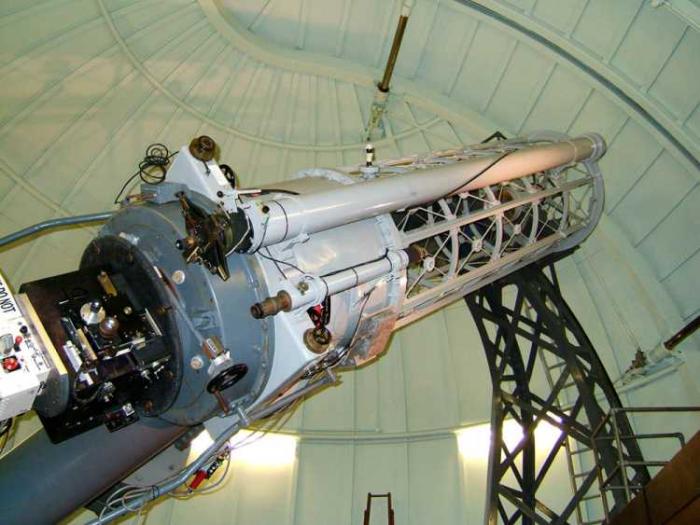
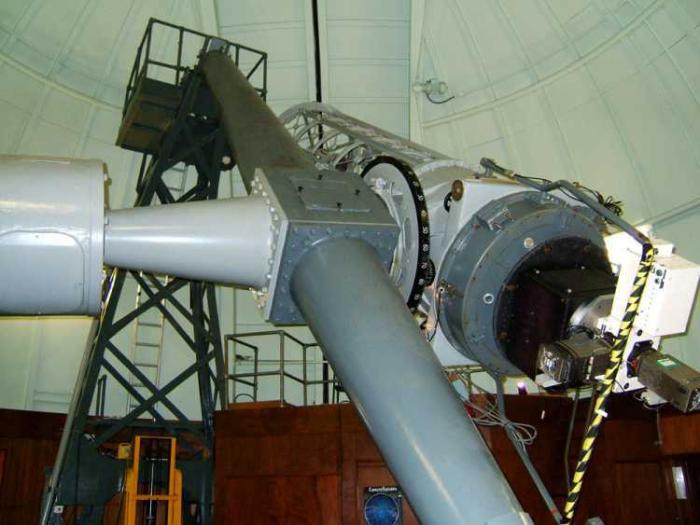
Used for photoelectric photometry and stellar spectrography. In 1986, I would occasionally bring
equipment to this telescope as it was being used for sky testing the RGO's CCD cameras destined
for La Palma.
The instrument at the bottom of the telescope is the Peoples Photometer. There was an identical instrument which I maintained for the 1 metre Jacobus Kapteyn Telescope (JKT) on La Palma. The photomultiplier tubes are housed in the cold boxes mounted at right angles on the white instrument case as seen in the lower image. The photometer at the JKT was automated. The various filter and aperture slides being moved into the beam by pneumatic pistons. These could be troublesome and sometimes failed when working against gravity. I knew I'd be in for a busy night if I was up as duty engineer and the Peoples Photometer was in use!
The instrument at the bottom of the telescope is the Peoples Photometer. There was an identical instrument which I maintained for the 1 metre Jacobus Kapteyn Telescope (JKT) on La Palma. The photomultiplier tubes are housed in the cold boxes mounted at right angles on the white instrument case as seen in the lower image. The photometer at the JKT was automated. The various filter and aperture slides being moved into the beam by pneumatic pistons. These could be troublesome and sometimes failed when working against gravity. I knew I'd be in for a busy night if I was up as duty engineer and the Peoples Photometer was in use!
THOMPSON 30 INCH REFLECTOR IN DOME A
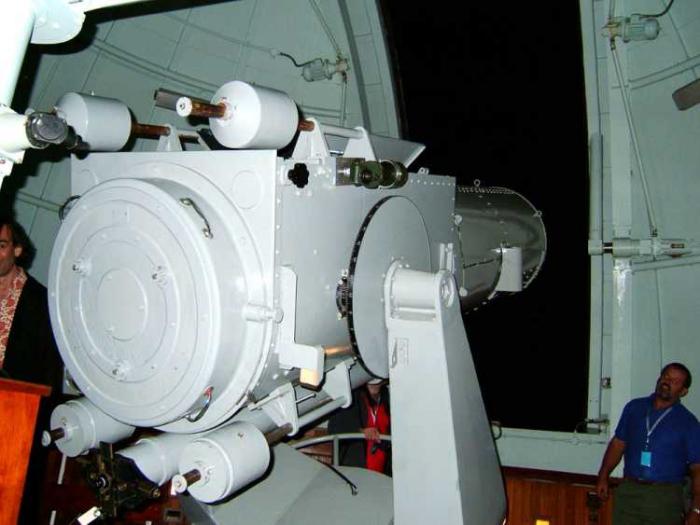
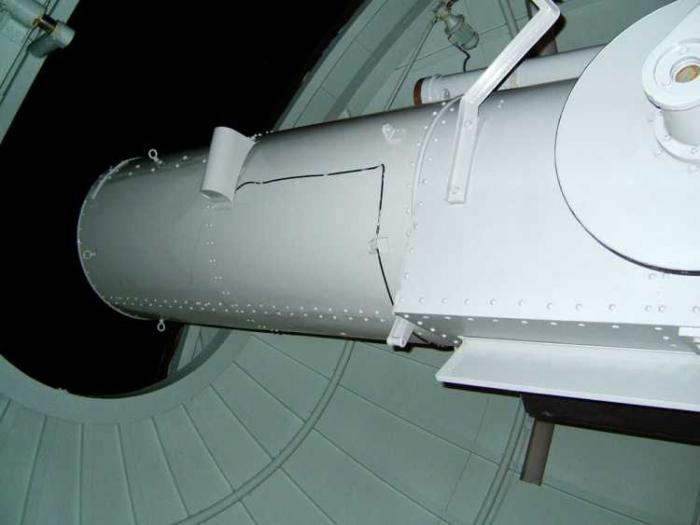
The only telescope in the EQ Group that I've never seen... Thanks for the images Ian. Looking
in my copy of W. H. McCrea's book; The Royal Greenwich Observatory, which I purchased
back in 1975 during the Tercentenary open days, I see that this telescope was used with a Coudé
spectrograph for stellar spectroscopy. The data being recorded photographically or with an image
intensifier. I wonder if the spectrograph is still there?
ASTROGRAPHIC 13 INCH REFRACTOR IN DOME D

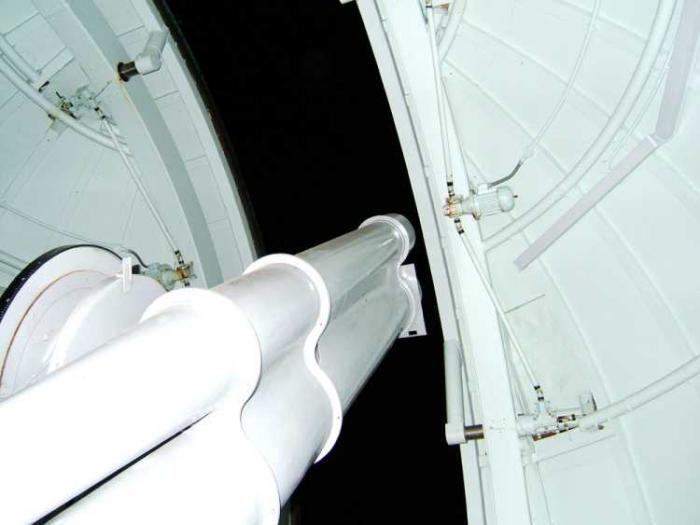
Another Grubb telescope acquired by W. H. M. Christie in 1890. I recall one night viewing the
moon through this telescope with Terry Dobner who lived in a cottage beside the castle... Nice
one Tez! Quoting from McCrea's book again, this telescope was used for photographic determinations
of positions and proper motions and for stellar photometry. It was also used for monitoring quasars
and Seyfert galaxies.
THOMPSON 26 INCH REFRACTOR IN DOME E
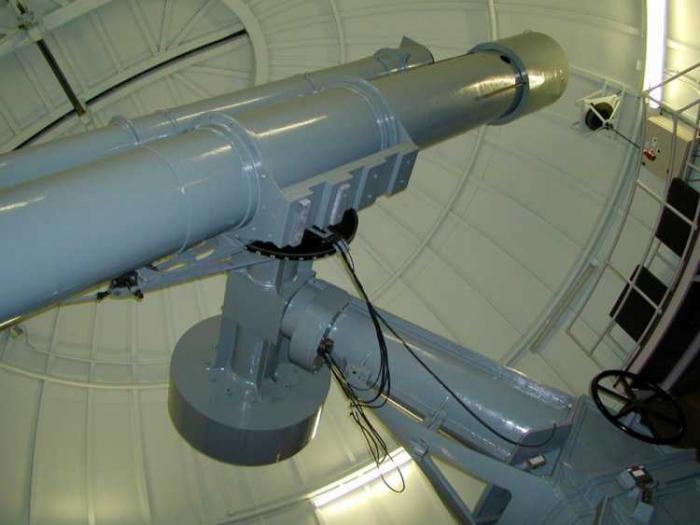
How great this telescope looks now its been restored. Compare this image to the photo I took back
in 1982 and see the difference!
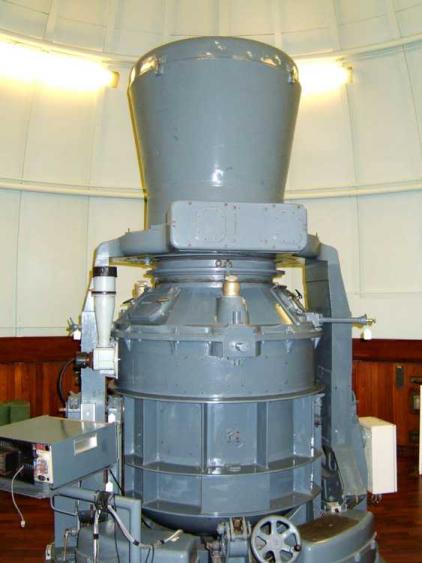
HEWITT SATELLITE CAMERA IN DOME C
Used for photographically recording the trails of artificial satellites to determine their orbital
parameters.
I was shown this camera in operation one night by Max White who ran that section. Quite noisy in operation I recall due to a chopping vane which broke the satellite trails into discrete (time tagged) sections for later measurement on the film plate.
I was shown this camera in operation one night by Max White who ran that section. Quite noisy in operation I recall due to a chopping vane which broke the satellite trails into discrete (time tagged) sections for later measurement on the film plate.
HARGREAVES 38 INCH REFLECTOR (CONGO SCHMIDT) IN DOME F
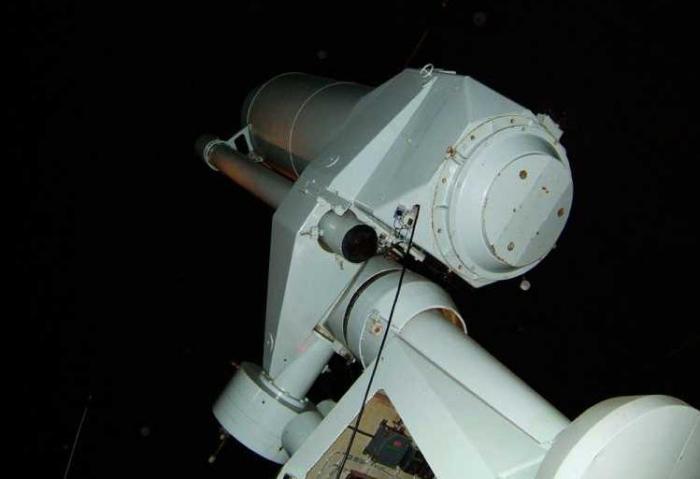
This telescope was originally planned to be erected in Elisabethville in what was once called the
Belgian Congo. McCrea mentions it was purchased by RGO in 1972 and under test in 1974. He also says
that this fine telescope is very versatile and can be used as a normal reflector working at
prime, Cassegrain or Coudé focus or as an F3 Schmidt camera. The story I heard when I worked at RGO
was that it was far from being a 'fine telescope'! The optics were so poor that to all intents the
telescope was unusable. Whether this is still the case today or just not good enough for scientific
work I've no idea.

